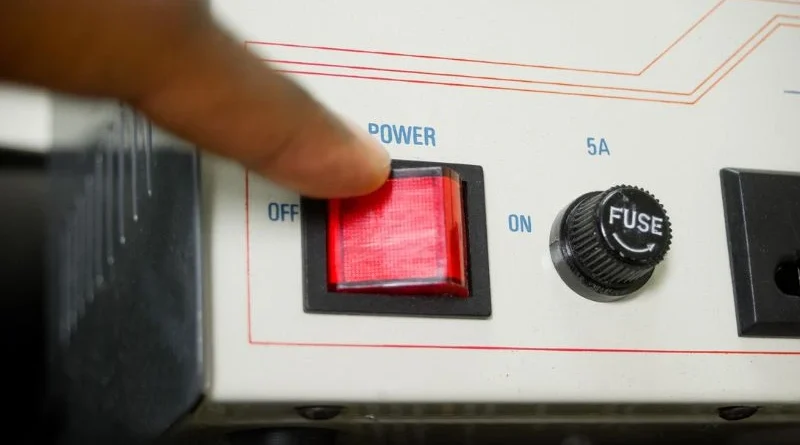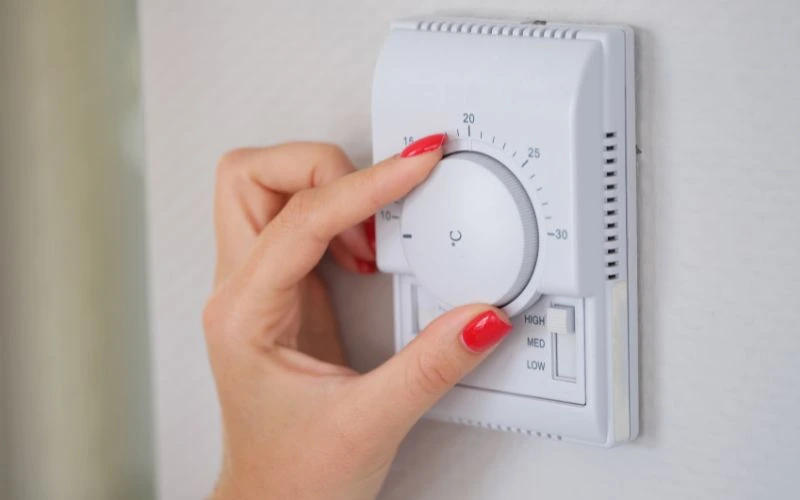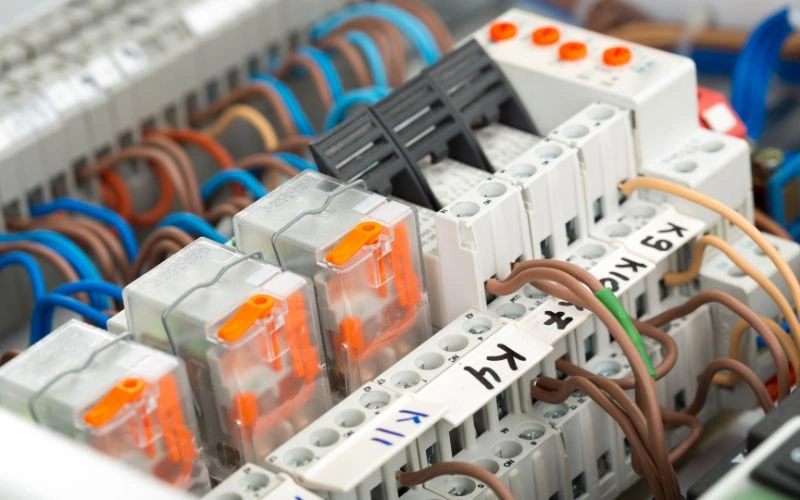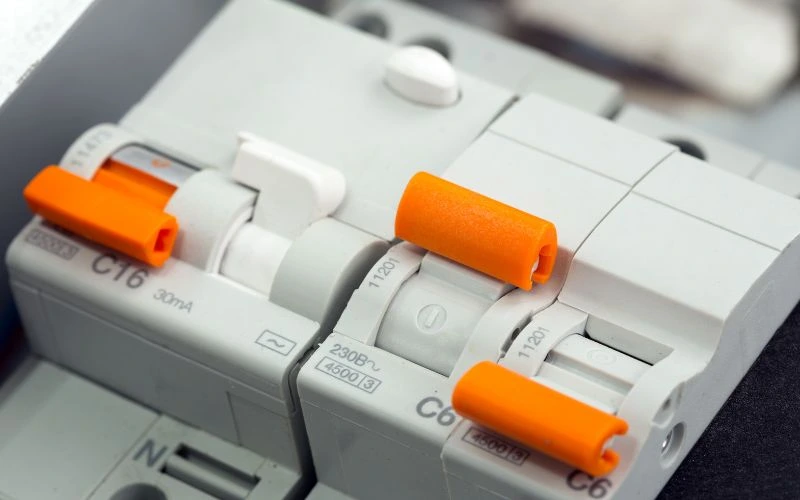
In electronics, voltage regulation is crucial to ensuring stable and reliable operation of various devices. The 7805 voltage regulator is a commonly used integrated circuit (IC) that maintains a constant voltage source. This in-depth guide examines the 7805 voltage regulator, its pinouts, circuitry, and versatile applications.
Understanding Voltage Regulation with 7805

Understanding voltage regulation is essential for anyone working with electronics. When it comes to the 7805 voltage regulator, it is important to understand that voltage regulation ensures a constant and stable voltage supply in electronic circuits. This reliability is critical because different components and devices require specific voltage levels to function properly. Inconsistent or fluctuating voltages can cause malfunction or even damage to sensitive electronic components, highlighting the importance of mastering voltage regulation with the 7805.
What is a voltage regulator?
Voltage regulation involves maintaining a constant voltage level in an electronic circuit. It ensures that the output voltage remains stable regardless of fluctuations in input voltage or load conditions. Voltage regulators are essential for the proper functioning of many electronic devices.
Why is voltage regulation important?
Voltage regulation is critical because electronic components and circuits often require specific voltage levels to function properly. Inconsistent or unstable voltages can cause malfunctions, reduced lifespan, or even permanent damage to these components.
What is 7805 voltage regulator?
The 7805 voltage regulator is a widely used linear voltage regulator IC with a regulated output voltage of +5V. It is part of the 78xx series of voltage regulators and is known for its simplicity and reliability. The 7805 is a three-port device with input, ground, and output pins.
7805 Voltage Regulator Features
- Output voltage: +5V
- Maximum input voltage: +35V
- Output current: Up to 1A
- Integrated overcurrent and thermal protection
- Low drop voltage
7805 Voltage Regulator IC Specifications
Here are some important specifications of 7805 voltage regulator IC:
- Input voltage range: 7V to 35V
- Output voltage: +5V
- Output current: 1A
- Quiescent current (idle current): 5-10 mA
- Operating temperature range: 0°C to 125°C
Solve heating problems

A common problem with the 7805 voltage regulator is overheating. Excessive heat can cause poor performance and even damage the IC. It is important to understand the causes of overheating and how to avoid it.
Causes of warming
- High input voltage
- High current load
- Insufficient heat dissipation
- Bad PCB Layout
This will prevent overheating
To prevent excessive heating of the IC 7805, you should consider the following measures:
- Use a heat sink
- Proper regulation of input voltage
- Proper PCB Design
- Avoid high current consumption
Building a 7805 Voltage Regulator Circuit
When working with the 7805 voltage regulator, it is important to understand how to build a circuit correctly. Here are the steps to create a simple voltage regulation circuit using IC 7805:
- Provide the necessary components: IC 7805, input and output capacitors, input and output voltage sources, and a heat sink (if necessary).
- Connect the input voltage source to the input pin of the 7805 IC.
- Connect the ground terminal of the 7805 to common ground.
- Connect the output capacitor between the output pin and ground.
- Connect the load to the output terminal.
- Connect a heat sink to the IC 7805 to dissipate excess heat.
To ensure proper operation, it is important to test and troubleshoot the circuit.
The working principle of 7805 voltage regulator

The 7805 voltage regulator works on the principle of linear regulation. It adjusts the output voltage by dissipating excess voltage in the form of heat, maintaining a constant output voltage of +5V.
Voltage regulation mechanism
The IC 7805 continuously monitors the output voltage and compares it to a reference voltage. If the output voltage deviates from the desired +5V, the regulator adjusts the current flowing through its internal pass transistor to correct the output voltage.
Voltage output stability
The 7805 voltage regulator provides stable and reliable voltage output as long as the input voltage remains within the specified range and the load current does not exceed its maximum rating.
7805 Voltage Regulator Applications
Due to its versatility, the 7805 voltage regulator is suitable for numerous applications:
- Microcontroller and IC Power Supply: The 7805 is often used to provide a stable power source for microcontrollers, microprocessors, and other digital ICs.
- Voltage Regulation in Audio Amplifiers: Audio amplifiers require a stable power supply for clean, distortion-free sound output.
- Charge the battery with 7805: It can charge batteries and provides a constant voltage to prevent overcharging.
- LED lighting systems: LEDs require a constant current source; the 7805 can help achieve this.
Tips for Using 7805 Voltage Regulators Efficiently

- Voltage Divider Configuration
- Choosing the Right Input and Output Capacitors
- Adequate heat dissipation
Voltage Divider Configuration
Sometimes you need an output voltage other than the standard +5V provided by the 7805 regulator. To achieve this, you can use a voltage divider circuit in combination with the 7805. By adjusting the resistance values in the divider, you can create a Custom output voltage suited to your specific application.
Choosing the Right Input and Output Capacitors
Selecting the appropriate input and output capacitors is critical to the stability of your voltage regulation circuit. Make sure to use capacitors with the correct capacitance values and voltage ratings. The input capacitor helps filter high-frequency noise, while the output capacitor provides transient response and reduces output voltage ripple.
Adequate heat dissipation
Although the 7805 regulator has built-in thermal protection, effective heat dissipation is essential for reliable operation. If your application requires higher currents or longer usage, you should consider adding a heatsink to the IC 7805 when designing your circuit. Ensure adequate ventilation and avoid placing the controller in a confined space.
Conclusion
The 7805 voltage regulator is a fundamental component in electronics that provides stable and reliable voltage regulation. You can effectively integrate this IC into your electronic projects by understanding its pinout, circuitry, applications, and best practices. Whether you are a hobbyist or a professional, mastering the 7805 voltage regulator opens up opportunities for developing innovative and reliable electronic devices.
Common questions
What is the maximum input voltage for a 7805 regulator?
The maximum input voltage for a 7805 regulator is typically +35V. Exceeding this voltage may cause overheating and damage to the IC.
How do I connect capacitors to the 7805 voltage regulator?
To stabilize the output voltage and reduce noise, connect an input capacitor (typically 0.1 µF) between the input and ground pins and an output capacitor (typically 10 µF) between the output and ground pins of the 7805 regulator .
Can I use multiple 7805 regulators in parallel for higher currents?
You can connect multiple 7805 regulators in parallel to increase the output current capacity. Make sure each regulator has its own input and output capacitors and that these distribute the load evenly to avoid imbalances.

